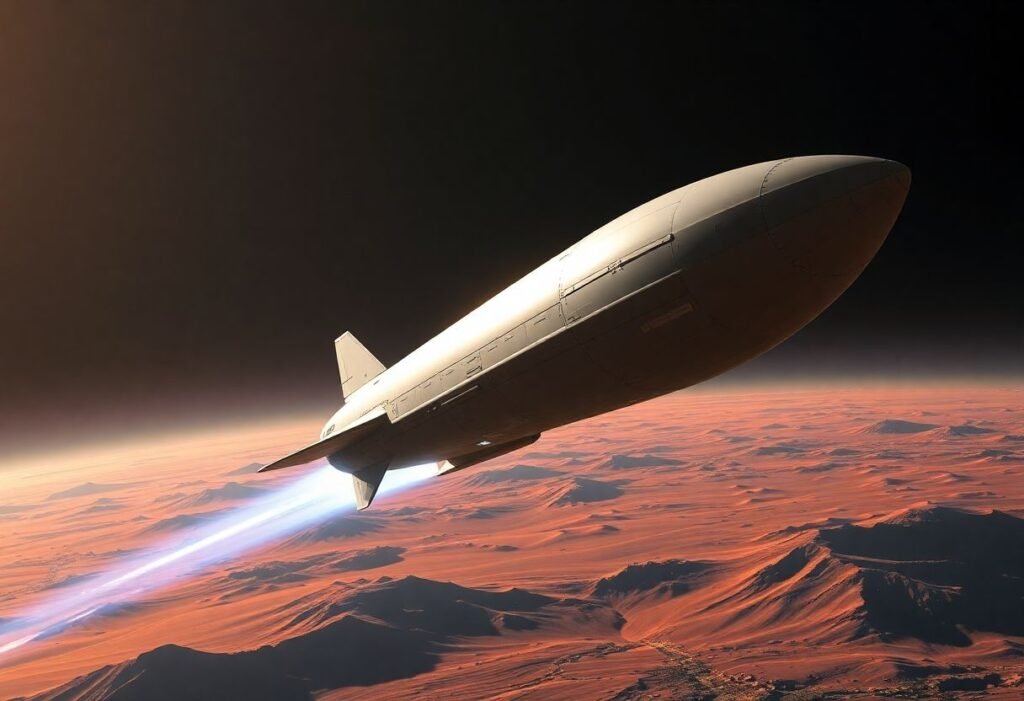Elon Musk’s vision for the future includes interplanetary travel, with plans to launch SpaceX’s Starship to Mars as early as 2026. This ambitious project not only aims to explore the red planet but also serves as a stepping stone for the potential colonization of Mars, marking a significant milestone in humanity’s quest to become a multi-planetary species.
The Launch of Starship: A Critical Step
The journey to Mars is set to begin with the deployment of the first Starship spacecraft in 2026. According to Musk, this initial launch will pave the way for subsequent missions that will eventually carry astronauts to Mars by 2028. This timeline reflects Musk’s commitment to space exploration and highlights the urgency of preparing for interplanetary colonization. With advanced technology and engineering innovations, SpaceX is poised to redefine the boundaries of space travel. The Starship program promises to equip humanity with the tools necessary for life beyond Earth.
Technology Behind Starship
Starship is designed with cutting-edge technology aimed at ensuring safety and efficiency during its voyage to Mars. Its reusable design reduces costs significantly, making it a sustainable option for frequent space travel. Musk has specified that Starship could carry up to 100 tons of cargo, essential for establishing a base on Mars. This innovation is not just a vehicle; it’s a robust platform for future missions, data collection, and ancillary support systems. Engineered for deep-space missions, Starship represents a giant leap forward in aerospace technology, enabling the dream of interplanetary life.
Human Factors in Mars Missions
As SpaceX prepares for the initial missions, understanding human factors becomes crucial. Astronauts will face numerous challenges, including long-duration spaceflight, psychological effects, and adaptation to Martian conditions. Ongoing research on these issues aims to ensure that future crews can thrive in the harsh environment of Mars. Establishing life support systems, psychological support, and recreational activities will play vital roles in mission success. Addressing these concerns demonstrates a comprehensive approach to ensuring astronaut well-being on such a historic journey.
International Collaboration and Space Policy
Musk’s Mars plans extend beyond SpaceX’s technological prowess; they underscore the importance of international collaboration in space exploration. Agreements between countries, space agencies, and private entities can facilitate shared goals, reduce resource depletion, and help manage common challenges. Formulating effective space policy will be critical to ensuring that missions to Mars are conducted responsibly and ethically. By fostering a collaborative environment, the strategy will open the door to innovations and partnerships that enrich space exploration.
Implications for Humanity
Successfully sending humans to Mars would signify a monumental accomplishment for humanity, with implications extending far beyond space travel. Establishing a human presence on another planet could lead to breakthroughs in science, engineering, and our understanding of existence. It raises questions about the sustainability of life in extraterrestrial environments and the future of humanity itself. As SpaceX readies itself for launch, it carries the hopes of millions eager to partake in this new chapter in human exploration and innovation.
The Future of Space Exploration
Looking forward, the missions to Mars will not be the end of SpaceX’s aspirations but merely a step in a broader quest to explore the cosmos. Each successful mission will inform future travels to more distant planets and moons. This progressive vision is a catalyst for inspiring the next generation of scientists, engineers, and explorers. The accomplishments of the Starship program might very well lay the groundwork for future projects that extend humanity’s reach into the universe. It’s a thrilling prospect that calls for collective optimism and support for continued investment in space exploration.
Disclaimer: The information provided here is based on current project details and forecasts from 2023 and may change as the space industry evolves.





















